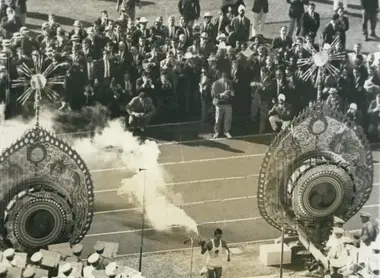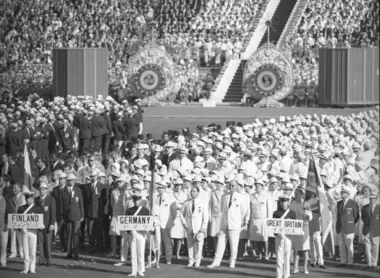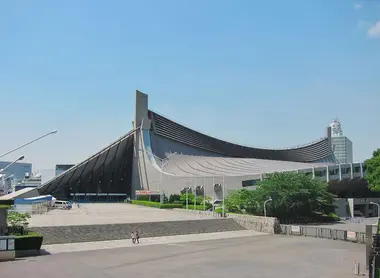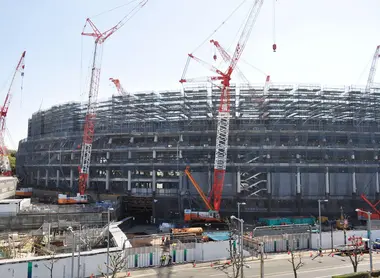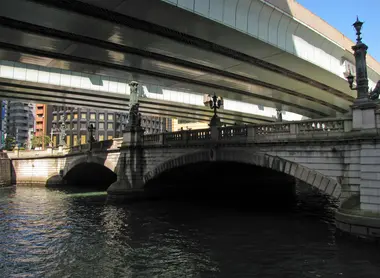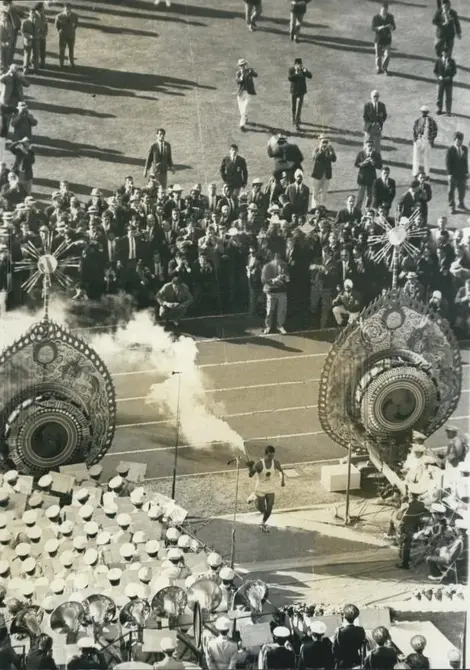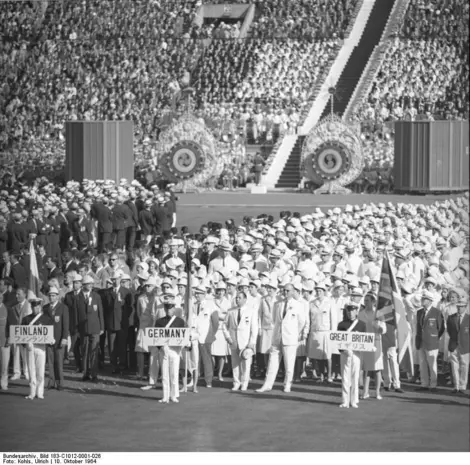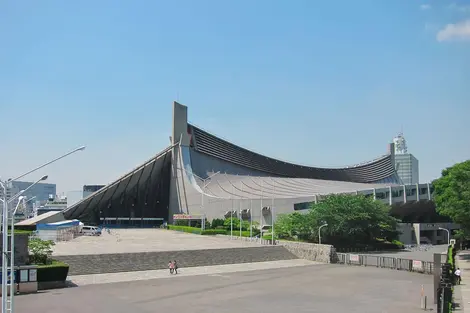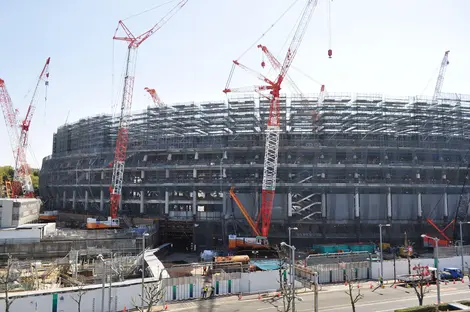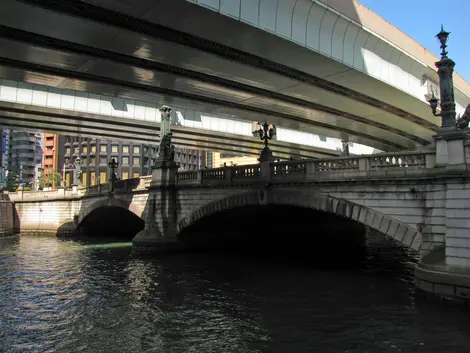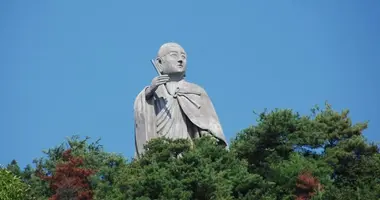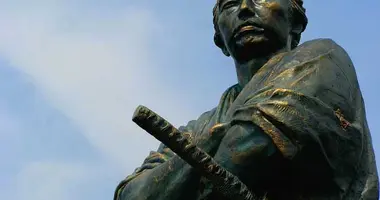The Tokyo 1964 Olympic Games 東京オリンピック1964
- Published on : 15/04/2019
- by : J.L.
- Youtube
The rebirth of a country
The 1964 Olympics was an opportunity for Japan to fully recover from the devastation of World War II and marked the rebirth of the nation. The event was a huge success and catapulted Japan to the status of a modern and developed nation.
Prestige through sport
Originally, Japan was a candidate for the XII Olympiad which was to take place in 1940. But the Sino-Japanese war started in 1937 and the outbreak of the Second World War put a halt to this project.
After the years of devastating wars, Japan was finally able to show a new face to the world. On October 10, 1964, Tokyo welcomed all sports nations to the great Kasumigaoka National Stadium, inaugurated then by Emperor Hirohito. Since then, this date has become a public holiday in Japan, synonymous with the celebration of sports, which in the year 2000 moved to the second Monday of October. It is planned that in 2020, to celebrate the Tokyo Olympics, sports day will become July 24, the day of the opening ceremony of the 2020 Summer Olympics.
State-of-the-art infrastructure
In 1964, during the Tokyo Olympics, 5,133 athletes from 93 nations competed in 163 events. It was the first of its kind on the Asian continent.
To make the 1964 Games successful as well as possible, Japan and especially the city of Tokyo had to completely erase the scars of war during an immense reconstruction effort, within particular new infrastructures to bring the country into modernity.
In the transport sector, the train was to symbolize power and speed. Since 1956, the Tôkaidô mainline was entirely electrified from Tokyo to Kobe, doing away with steam locomotives in favor of modern trains which, in 1958 offered a "Kodama" (tokkyu) service between Tokyo and Osaka (6h50 trip).
But the most impressive was the first Shinkansen high-speed line, on which a world speed record was broken in 1963 at 256 km/h, to open on October 1, 1964, to the general public, just before the Olympic Games. The Shinkansen then connected Tokyo to Osaka in 4 hrs!
Another revolutionary type of transportation, the Tokyo monorail, was introduced on September 17, 1964, allowing a fast connection between Haneda airport and the city center in about twenty min, whereas previously took 2 hrs by car due to traffic!
The construction work of the Tokyo-Haneda monorail was completed quickly, in 1 year and 3 months.
At the road level, a metropolitan expressway crossed the city of Tokyo, the Shuto Kosoku (highway). This was the era of the almighty car, which marked the end of the city's streetcar network. Most rivers and canals were also filled to accommodate these urban highways, even disfiguring heritage treasures like the historic Nihonbashi Bridge. But it must also be said that there were also reasons for the prevention of natural disasters.
A great success
Japan, and particularly the city of Tokyo, changed its face thanks to these modernizations and high-speed reconstruction. The whole country wanted to show the whole world its new ability to enter the race for global economic growth. This will propel the archipelago to second place in the world behind the United States, in no time. The urban development that took place was then striking.
At that time, the sport also became very close to the Japanese and the government encouraged them to practice it regularly.
The Kasumigaoka National Stadium, a strong symbol of the 1964 Olympics, will also be so in 2020 with its total reconstruction by architect Kengo Kuma. It will again host the Opening and Closing Ceremonies, as well as the athletics and football events.
Several other places, built for the 1964 Olympic Games are reused in 2020. They are grouped in what the organizers have called the "legacy zone". Among them, is the Yoyogi course in the heart of Tokyo between the Harajuku and Shibuya districts.
For more information on the 2020 Summer Olympics:
- Tokyo 2020 Olympic Games
- Tokyo 2020 Olympics schedule
- Tokyo 2020 Olympic Games Event Venues
- Ecology at the 2020 Olympics
- Opening of an official store for the 2020 Olympics in Tokyo
- The Tokyo 1964 Olympic Games
- Olympics 2020 - Baseball and Softball
- Olympic Games 2020 - Aquatic events in Odaiba
- Olympics 2020 - Basketball
- Olympic Games 2020 - Follow the football competition
- Olympic Games 2020 - The water events in Enoshima
- Olympic Games 2020 - Boxing at the foot of the Tokyo SkyTree
- 2020 Olympics - Handball in the heart of Tokyo
- Olympic Games 2020 - Cycling in the Izu Peninsula and at the foot of Mount Fuji
- Olympic Games 2020 - Tennis at Ariake
- Olympic Games 2020 - Surfing in Tsurigasaki
- Visiting Tokyo during the 2020 Olympic Games
- Traveling to the Tokyo 2020 Olympic Games
- Where to eat in Tokyo during the 2020 Olympics?
- Tokyo 2020 Paralympic Summer Games

